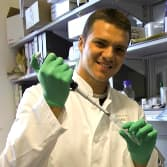Epigenetic Mechanisms of Environmental Diseases
A special issue of Biomedicines (ISSN 2227-9059). This special issue belongs to the section "Cell Biology and Pathology".
Deadline for manuscript submissions: closed (31 July 2022) | Viewed by 67456
Special Issue Editors
Interests: epigenetics; regulation of gene expression; obesity; adipogenesis; regulation of adipogenesis by histone-modifying enzymes; regulation of adipogenesis by polyphenols; molecular mechanisms of « browning »
Interests: gene/environment interaction; non-genetic inheritance; complex diseases; diabetes; obesity; cancer; epigenetics
Special Issue Information
Dear Colleagues,
This Special Issue, “Epigenetic Mechanisms of Environmental Diseases” will mainly focus on environmental influences on human health.
The human genome encodes approximately 30,000 genes. It is estimated that over 8,000 human diseases are caused by defects in single genes. These unifactorial or monogenic diseases are individually rare and affect approximately one percent of the human population. In contrast, complex human diseases such as cancer and type 2 diabetes are believed to involve both susceptibility genes and their interactions with the environment. Gene-environment interactions are thought to be mediated by epigenetic modifications across the genome that represent orchestrated phenomena which modulate the transcriptional output of the genetic code. In this sense, identifying the aberrant changes in the epigenetic landscape associated with environmental diseases such as type 2 diabetes, obesity, cancer and cardiovascular, neurodegenerative and immunological diseases could provide the potential for new approaches for disease prevention and intervention.
We cordially invite authors in the field to submit original research or review articles pertaining to this important and fast-progressing field of biomedicine.
Dr. Paola Ungaro
Guest Editor
Dr. Raffaele Teperino
Co-Guest Editor
Manuscript Submission Information
Manuscripts should be submitted online at www.mdpi.com by registering and logging in to this website. Once you are registered, click here to go to the submission form. Manuscripts can be submitted until the deadline. All submissions that pass pre-check are peer-reviewed. Accepted papers will be published continuously in the journal (as soon as accepted) and will be listed together on the special issue website. Research articles, review articles as well as short communications are invited. For planned papers, a title and short abstract (about 100 words) can be sent to the Editorial Office for announcement on this website.
Submitted manuscripts should not have been published previously, nor be under consideration for publication elsewhere (except conference proceedings papers). All manuscripts are thoroughly refereed through a single-blind peer-review process. A guide for authors and other relevant information for submission of manuscripts is available on the Instructions for Authors page. Biomedicines is an international peer-reviewed open access monthly journal published by MDPI.
Please visit the Instructions for Authors page before submitting a manuscript. The Article Processing Charge (APC) for publication in this open access journal is 2600 CHF (Swiss Francs). Submitted papers should be well formatted and use good English. Authors may use MDPI's English editing service prior to publication or during author revisions.
Keywords
- Environmental and health
- Epigenetics
- Cardiovascular diseases
- Carcinogenesis
- Infertility
- Metabolic syndrome
- Obesity
Benefits of Publishing in a Special Issue
- Ease of navigation: Grouping papers by topic helps scholars navigate broad scope journals more efficiently.
- Greater discoverability: Special Issues support the reach and impact of scientific research. Articles in Special Issues are more discoverable and cited more frequently.
- Expansion of research network: Special Issues facilitate connections among authors, fostering scientific collaborations.
- External promotion: Articles in Special Issues are often promoted through the journal's social media, increasing their visibility.
- Reprint: MDPI Books provides the opportunity to republish successful Special Issues in book format, both online and in print.
Further information on MDPI's Special Issue policies can be found here.







